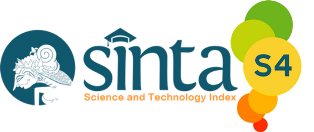Pengelolaan Pembelajaran Blended Learning Masa Covid 19
DOI:
https://doi.org/10.21580/jawda.v5i2.2024.23022Keywords:
Management, Learning, Blended learningAbstract
The purpose of this study is to find out the management of blended learning at SD Supriyadi Semarang which is focused on 3 parts, namely material management, process, and results. This research approach uses qualitative descriptive research. This research was carried out at SD Supriyadi Semarang. The subjects of this study are teachers and students at SD Supriyadi Semarang. The data collection technique uses observation, interview and documentation techniques. The data validity technique uses source triangulation. The data analysis technique uses data reduction methods, data presentation and conclusion drawn. The results of the study show that the management of blended learning has not been carried out well. This study found that (1) The management of blended learning materials has not been carried out well, teachers do not try to distinguish the materials used in blended learning. (2) The management of the blended learning process has not been maximized. Teachers do not understand classroom management. (3) The management of blended learning outcomes has not been maximized, there is a tendency for teachers to emphasize learning outcomes more on cognitive aspects and less touching on affective aspects. Therefore, teachers at SD Supriyadi Semarang need to conduct a review so that the material presented is in accordance with the provisions. Teachers as educators must understand classroom management in blended learning. In the management of learning outcomes, teachers should apply three-aspect assessment and not lean towards only one aspect. In addition, the school should hold a dilkat for teachers so that teachers can do this blended learning well. This research recommends increasing teacher competency in blended learning management to support more effective and comprehensive learning. For future research, it is expected to expand the variables and research objects and is expected to use more research literature
Downloads
References
Akub, Rina Yuliana. “ANALISIS PENERAPAN BLENDED LEARNING DALAM PEMBELAJARAN DI SEKOLAH DASAR PADA COVID-19” 19 (2021): 1–5.
Diana, Purwati Zisca, Denik Wirawati, dan Sholeha Rosalia. “Blended Learning dalam Pembentukan Kemandirian Belajar.” Alinea: Jurnal Bahasa, Sastra, dan Pengajaran 9, no. 1 (2020): 16. https://doi.org/10.35194/alinea.v9i1.763.
Indriani, Tri Mughni, Toto Fathoni, dan Cepi Riyana. “Implementasi Blended Learning dalam Program Pendidikan Jarak Jauh Pada Jenjang Penddikan Menengah Kejuruan.” Edutcehnologia 2, no. 2 (2018): 129–39.
Kasanah, Siti Imroatul, Jurusan Manajemen, Pendidikan Fakultas, Ilmu Pendidikan, dan Universitas Negeri. “Implementasi Pembelajaran Blended Learning Di Desa Terpencil Pada Masa Pandemi Covid-19.” Jurnal Inspirasi Manajemen Pendidikan 9, no. 12 (2003): 999–1012.
Kazu, Ibrahim Yasar, dan Mehmet Demirkol. “Kazu, I. Y., & Demirkol, M. (2014). Effect of Blended Learning Environment Model on High School Students’ Academic Achievement. Turkish Online Journal of Educational Technology - TOJET, 13(1), 78–87. Retrieved from http://search.ebscohost.com/login.aspx?d.” Turkish Online Journal of Educational Technology - TOJET 13, no. 1 (2014): 78–87.
Minsih, Minsih, dan Aninda Galih D. “Peran Guru Dalam Pengelolaan Kelas.” Profesi Pendidikan Dasar 1, no. 1 (2018): 20. https://doi.org/10.23917/ppd.v1i1.6144.
Nurdiani, Nina. “Teknik Sampling Snowball dalam Penelitian Lapangan.” ComTech: Computer, Mathematics and Engineering Applications 5, no. 2 (2014): 1110. https://doi.org/10.21512/comtech.v5i2.2427.
Ramadani, Ananda Dwi, Sulthoni, dan Agus Wedi. “Implementasi Blended Learning Di Jurusan.” Jurnal Kajian Teknologi Pendidikan 2, no. 1 (2019): 62–67.
Rohana, Syarifah, dan Andi Syahputra. “Model Pembelajaran Blended Learning Pasca New Normal Covid-19.” At-Ta’Dib: Jurnal Ilmiah Prodi Pendidikan Agama Islam 13, no. 1 (2021): 48. https://doi.org/10.47498/tadib.v13i01.488.
Saritepeci, dan Cakir. “The Effect of Blended Learning Environments on Student’s Academic Achievement and Student Engagement: A Study on Social Studies Course.” Education and Science 40, no. 177 (2015): 203–16. https://doi.org/10.15390/EB.2015.2592.
Sidik, S, V Mandailina, N Hikmah, dan ... “Desain Pembelajaran Jarak Jauh Untuk Membangkitkan Motivasi Belajar Siswa Pada Masa Pandemi Covid-19.” Paedagoria : Jurnal Kajian, Penelitian dan Pengembangan Kependidikan 6356 (2021): 246–51.
Sutanti, Yunita Anggraeni, Suryanti Suryanti, dan Zainal Arifin Imam Supardi. “Implementasi Model Pembelajaran Berbasis Blended Learning Untuk Meningkatkan Kemampuan Keterampilan Berpikir Kritis dan Hasil Belajar Siswa SD.” Cetta: Jurnal Ilmu Pendidikan 4, no. 3 (2021): 594–606. https://doi.org/10.37329/cetta.v4i3.1461.
Tubagus, Munir, Suyitno Muslim, dan Suriani. “Development of learning management system-based blended learning model using claroline in higher education.” International Journal of Interactive Mobile Technologies 14, no. 6 (2020): 186–94. https://doi.org/10.3991/IJIM.V14I06.13399.
Yusuf, Bilfaqih, dan M. Nur Qomarudin. “Buku Esensi Penyusunan Materi Pembelajaran Daring,” no. January (2016).
Downloads
Additional Files
Published
Issue
Section
License
Authors who publish with this journal agree to the following terms:
Authors are able to enter into separate, additional contractual arrangements for the non-exclusive distribution of the journal's published version of the work (e.g., post it to an institutional repository or publish it in a book), with an acknowledgement of its initial publication in this journal.
Authors are permitted and encouraged to post their work online (e.g., in institutional repositories or on their website) prior to and during the submission process, as it can lead to productive exchanges, as well as earlier and greater citation of published work (See The Effect of Open Access).












